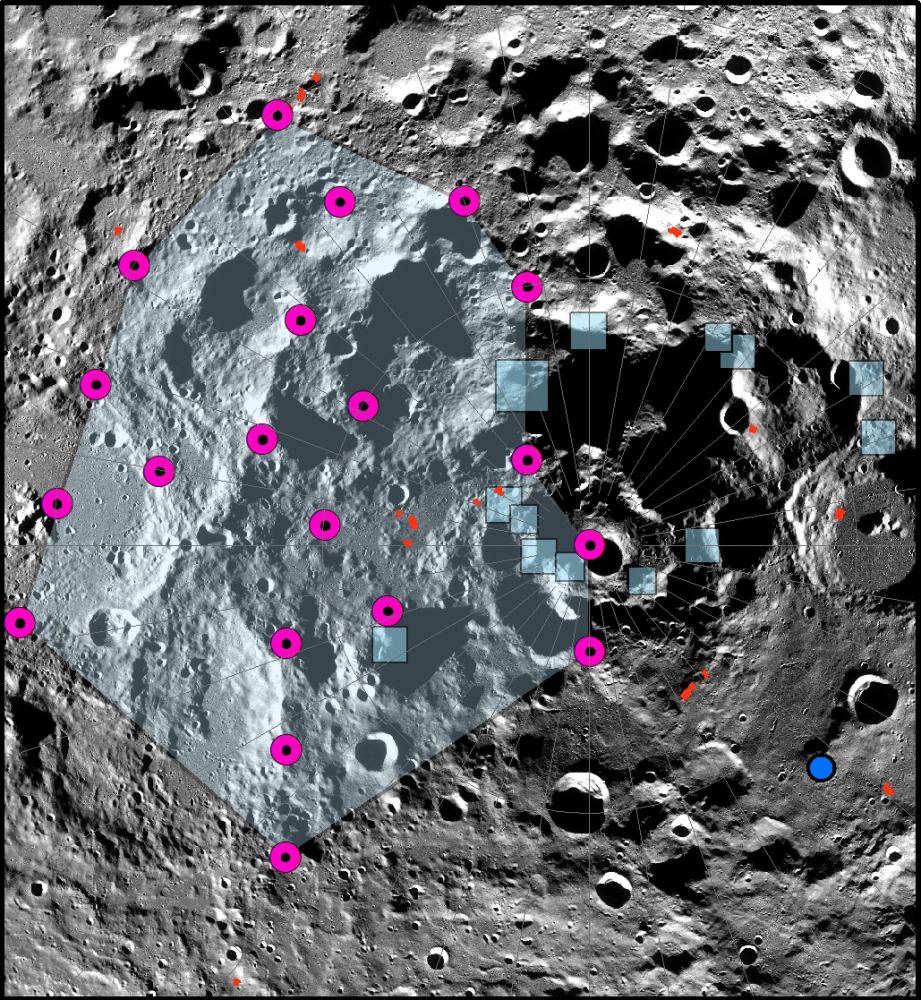Although our Moon formed 4.5 billion years ago, it’s still evolving. The interior continues to cool and its orbit is slowly changing. As a result, the Moon has lost 150 feet of its circumference. That shrinkage contributes to near-constant moonquakes, and those trigger landslides and other surface changes. The Moon is currently uninhabited, but all that activity threatens future Artemis landing sites and missions at the South Pole.
In a recent paper, planetary scientists point out that the potential of strong seismic events from active thrust faults should be a top consideration when NASA and other agencies are planning permanent outposts on the Moon. This is particularly true as the Artemis mission planners plot exploration of the South Pole. “Our modeling suggests that shallow moonquakes capable of producing strong ground shaking in the south polar region are possible from slip events on existing faults or the formation of new thrust faults,” said the study’s lead author Thomas R. Watters, a senior scientist emeritus in the National Air and Space Museum’s Center for Earth and Planetary Studies. “The global distribution of young thrust faults, their potential to be active, and the potential to form new thrust faults from ongoing global contraction should be considered when planning the location and stability of permanent outposts on the Moon.”
The Moon is particularly vulnerable to the large-scale effects of moonquakes. That’s because its surface is very brittle and easily broken up during a quake. One of the strongest quakes in lunar history occurred in the 1970s and lasted for hours. Such a lengthy event does quite a bit of damage to the lunar surface. So, even a light moonquake could cause significant damage via landslides.
Our Shaky, Shrinking Moon
Moonquakes generally happen within a hundred miles or so of the lunar surface. On Earth, that might result in a fairly mild quake. But, since the Moon’s surface is so brittle, the effects of those “shakes” are much more noticeable. According to Nicholas Schmerr, a co-author of the paper and an associate professor of geology at the University of Maryland, this means that shallow moonquakes can devastate hypothetical human settlements on the Moon.
“You can think of the Moon’s surface as being dry, grounded gravel and dust,” he said. “Over billions of years, the surface has been hit by asteroids and comets, with the resulting angular fragments constantly getting ejected from the impacts,” Schmerr explained. “As a result, the reworked surface material can be micron-sized to boulder-sized, but all very loosely consolidated. Loose sediments make it very possible for shaking and landslides to occur.”

Quakes affect every part of the lunar surface. Global compressional stresses deform the surface, forcing splits and cracks to occur. These scarps—steep slopes and cliffs—exist everywhere there. In their paper, the team suggests that many are close to the epicenters of geologically recent quakes. And the regions where they occurred could still be active today. That includes the lunar South Pole.
Risks to Artemis
The team led by Watters examined data and images of the lunar South Pole and linked faults there to a major moonquake in the 1970s. The region is filled with scarps, which are prime evidence for moonquakes. Although they conclude that some regions in the area are probably safe enough for the Artemis missions, others are not. The team’s computer models show that the most dangerous areas are vulnerable to landslides triggered by seismic shaking. They continue to map the Moon and track its quakes to identify the riskiest areas for Artemis astronauts to land.

That mission could take place by the end of the decade, when NASA hopes to establish long-term habitations for research and exploration. Schmerr points out that the risks to safety from even the slightest quakes can’t be overestimated. “As we get closer to the crewed Artemis mission’s launch date, it’s important to keep our astronauts, our equipment, and infrastructure as safe as possible,” Schmerr said. “This work is helping us prepare for what awaits us on the moon—whether that’s engineering structures that can better withstand lunar seismic activity or protecting people from really dangerous zones.”
The Artemis missions essentially mark NASA’s return to human exploration of the Moon. The idea is to collaborate with both commercial partners and international agencies to make this happen. Teams of lunar astronauts will establish an Artemis Base camp, and depend on a lunar gateway to connect the mission to Earth. Eventually, what they learn there will inform the first human missions to Mars.
For More Information
The Moon is Shrinking, Causing Landslides and Instability in Lunar South Pole
Tectonics and Seismicity of the Lunar South Polar Region
Artemis

